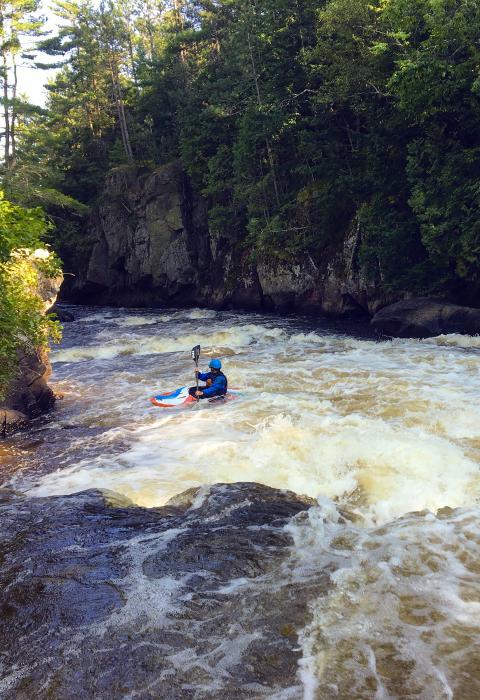Wolf River
Wisconsin
Noted as one of the most scenic and rugged rivers in the Midwest, the Wolf flows through the Menominee Reservation. All of the Wolf’s feeder streams have their origin in springs, spring seeps, and naturally exposed aquifers in the glacial sands and gravels. The designated stretches from the Langlade-Menominee County line downstream to Kenshena Falls. The river is not developed for public use.
Designated Reach
October 2, 1968. From the Langlade-Menominee County line downstream to Keshena Falls.
Outstandingly Remarkable Values
Culture
The river is entirely within the Menominee Reservation and County, the county of which was created in April 1961.The Menominee Reservation and forest contain many valuable cultural resources and archeological resources, such as the physical remains of past human activity. The specific locations of resources are not publicly available to help protect them from adverse action.
Fish
Historically, lake sturgeon spawned in the Wolf River as they swam upstream to Keshena Falls from Lake Winnebago. Biologists have been able to restore portions of historic migration reaches by catching lake sturgeon downstream and transporting them upstream around dams. A few of the lake sturgeon are then captured near Keshena Falls each year for ceremonial meals by the Menominee People. Above Kenshena Falls, brown trout are most common. Rainbow and brook trout are also taken early and late in the season.
Geology
The Wolf River flows over the southern extension of the Precambrian Canadian Shield, a bedrock composed of granite, gneiss, gabbro, and metamorphosed sedimentary rocks. The hard-impervious granite outcroppings form rapids, water falls, and the rocky walls of the river gorges. Most of the area is underlain by Precambrian crystalline granitic and syenitic rock of the Wolf River Bathylith, which is known locally as Wolf River granite.
Recreation
The Wolf River basin has long been recognized as a great outdoor recreation area. Variety of scenery and vegetation, abundance of waterways, and the amount of relatively undeveloped land provide a large variety of outdoor recreational activities–hunting, fishing, boating, swimming, camping, hiking, nature study, and enjoyment of the scenery and landscape.
The riverway offers exciting opportunities for canoeing, rubber raft floating, and other boating because of the relatively high gradient of the stream. The numerous riffles, rapids, and waterfalls make it especially attractive and exciting, but, at the same time, dangerous. There are several portages required around waterfalls and, depending on the season and the amount of water in the stream, long rocky stretches may have to be bypassed.

